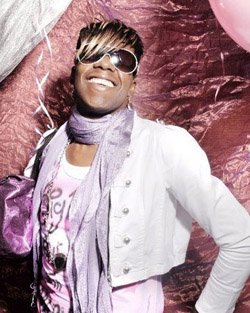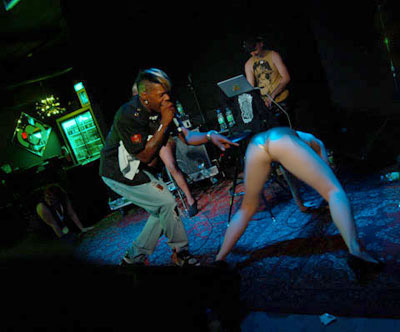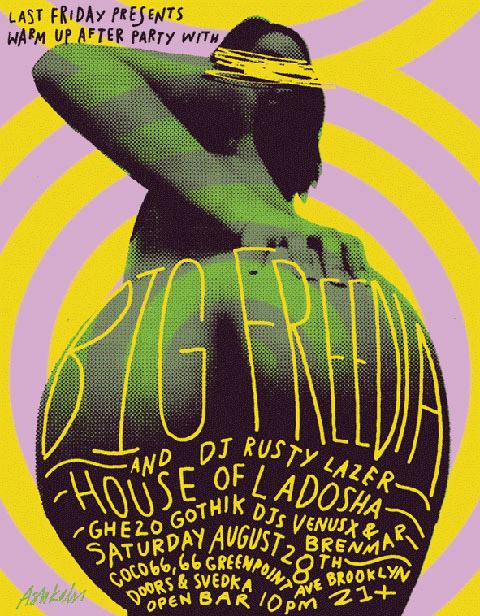For nearly three centuries, the great American city of New Orleans has marched to the beat of its own drum. An unusual mix of Spanish, Creole, French, African, Catholic and pagan influences, the Big Easy—with its famously and infamously debauched Mardi Gras festival—is deemed by many as the most unique city in all of the United States.
New Orleans is also a town that’s had a long and seedy love affair with socially condoned transgressions, ranging from one of the nation’s earliest red-light districts to being home to the country’s first drag performers. A city that has always embraced gay culture, it boasts one of the nation’s oldest gay bars and its decades-old gay celebrations, and so perhaps, it’s in the city of New Orleans that the genre known as “Sissy Bounce” could emerge and thrive.
A form of Hip-Hop that was born in New Orleans’ housing projects nearly 20 years ago, the style is characterized by rapid-fire beats taken from two samples, call and response chanting and rapping, and some of the most sexually aggressive lyrics you’ve ever heard. Sissy Bounce is bounce music, but with one major distinction: It’s performed by gay or “sissy” rappers.
According to Big Freedia, arguably Sissy Bounce’s biggest star, it’s an important distinction to make. “The term ‘sissy’ isn’t offensive to me; I am what I am,” says Freedia. “The problem is that all bounce rappers are not sissy rappers. They’re straight and it’s very offensive to them to be thought of as sissies. They don’t like getting lumped in with ‘that gay stuff.’ They’re our colleagues, and I feel their pain, so I respect their stance.”
Freedia has made a name and a living for herself successfully straddling two notoriously heterocentric cultures: Hip-Hop and the American South. It’s been a slow rise to the top—perhaps a sign of homophobia inherent to the scene—but that doesn’t get Freedia down, and why should it? Her years of hard work are finally paying off.
As an openly gay man who prefers the pronoun “she,” Freedia has managed to take a type of music born in some of the poorest areas of one of the most economically challenged cities in the country all the way to the pages of The New York Times and Vanity Fair, helping to establish the most prominent gay Hip-Hop scene in the country.
New Orleans is also a town that’s had a long and seedy love affair with socially condoned transgressions, ranging from one of the nation’s earliest red-light districts to being home to the country’s first drag performers. A city that has always embraced gay culture, it boasts one of the nation’s oldest gay bars and its decades-old gay celebrations, and so perhaps, it’s in the city of New Orleans that the genre known as “Sissy Bounce” could emerge and thrive.
A form of Hip-Hop that was born in New Orleans’ housing projects nearly 20 years ago, the style is characterized by rapid-fire beats taken from two samples, call and response chanting and rapping, and some of the most sexually aggressive lyrics you’ve ever heard. Sissy Bounce is bounce music, but with one major distinction: It’s performed by gay or “sissy” rappers.
According to Big Freedia, arguably Sissy Bounce’s biggest star, it’s an important distinction to make. “The term ‘sissy’ isn’t offensive to me; I am what I am,” says Freedia. “The problem is that all bounce rappers are not sissy rappers. They’re straight and it’s very offensive to them to be thought of as sissies. They don’t like getting lumped in with ‘that gay stuff.’ They’re our colleagues, and I feel their pain, so I respect their stance.”
Freedia has made a name and a living for herself successfully straddling two notoriously heterocentric cultures: Hip-Hop and the American South. It’s been a slow rise to the top—perhaps a sign of homophobia inherent to the scene—but that doesn’t get Freedia down, and why should it? Her years of hard work are finally paying off.
As an openly gay man who prefers the pronoun “she,” Freedia has managed to take a type of music born in some of the poorest areas of one of the most economically challenged cities in the country all the way to the pages of The New York Times and Vanity Fair, helping to establish the most prominent gay Hip-Hop scene in the country.






Comments